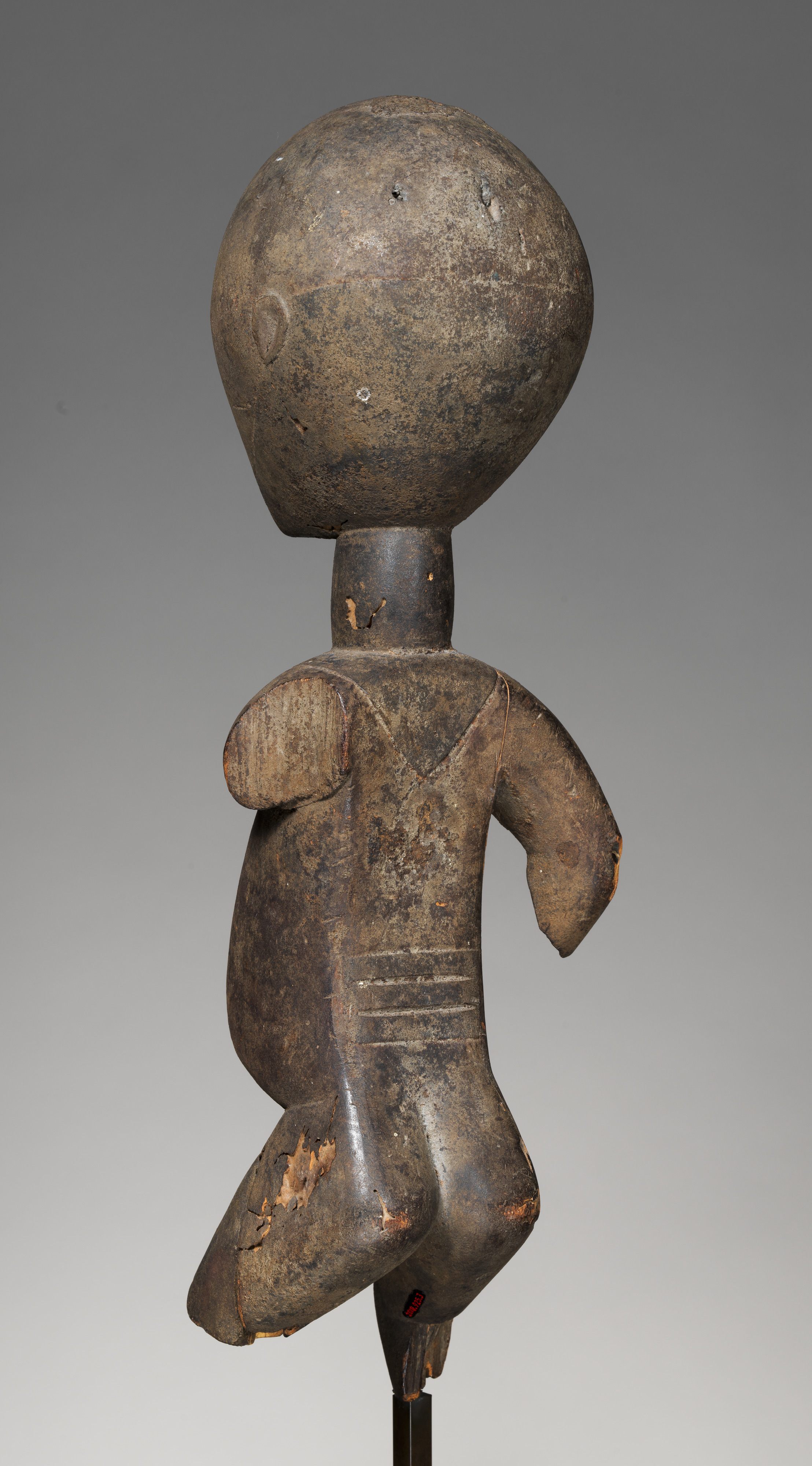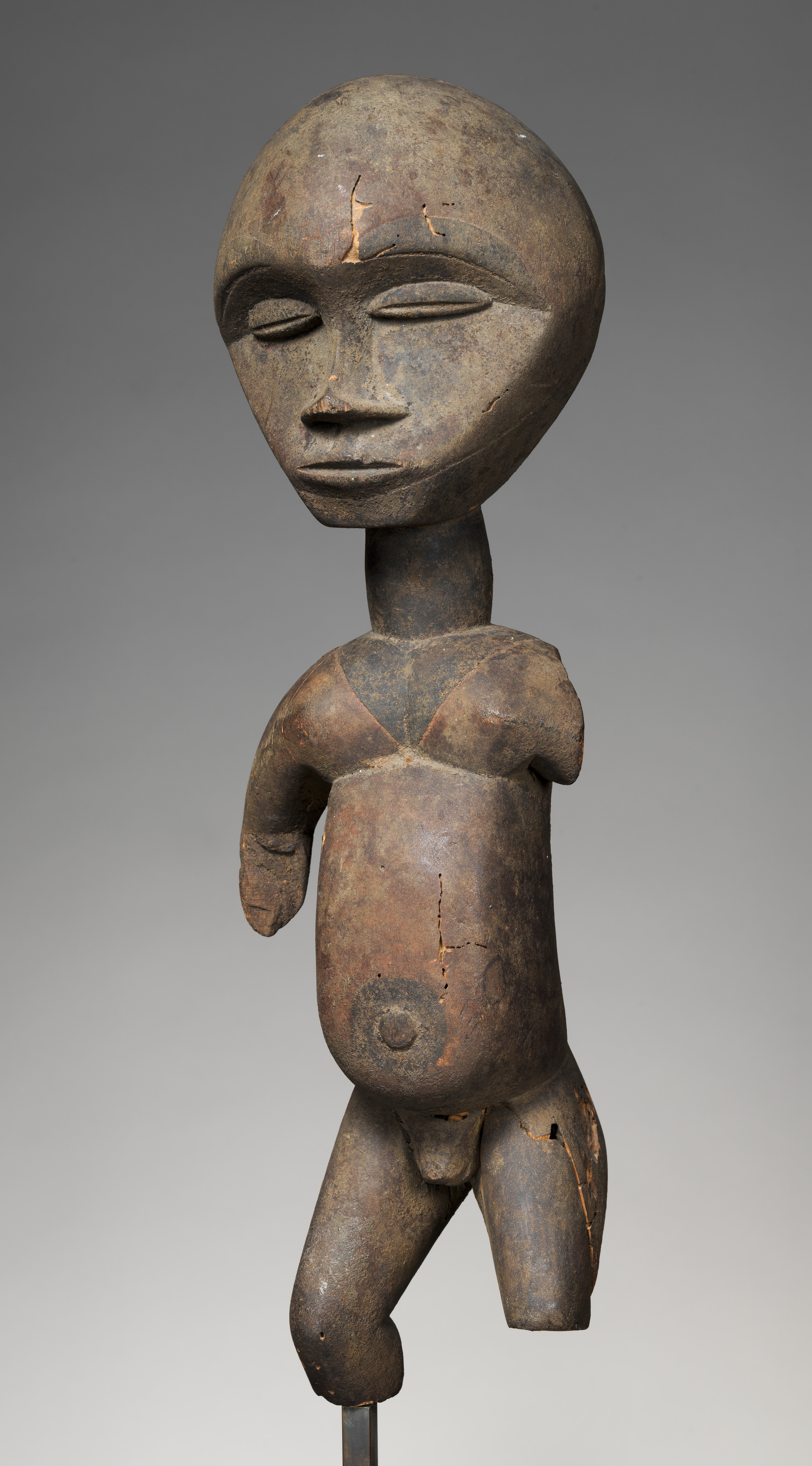Headdress: Fragment of Male Figure for Ogbom Dance
Not on view
Now a fragment, this standing male figure was originally positioned at the summit of a headdress. While the lower part of its legs and arms are now missing, comparison with other examples allow us to suggest that the figure would have originally been standing on a carved base, itself affixed to a fiber structure allowing it to stand on a performer’s head. Its fragmented state doesn’t take away from the figure’s dynamic stance. The figure’s flexed knees, arched back, developed torso and abdomen confer it with an arresting presence. Most of the visual emphasis is on the oversized spherical head. The facial features abruptly contrast with the back of the head’s round volume. They are sharply defined through deeply set eyes under a projecting forehead, the cut planes of the cheeks, and slightly upturned nose. The slits of the eyes, mouth and the shadow under the nose create three strong parallel horizontal lines across the face. Four parallel incised lines, a V-shaped projecting at the front and back of the neck, and a line running from the corners of the mouth to the back of the head, enhance the figure’s surface.
This example is characteristic of those created by Eket masters, an Ibibio sub-group centered around the town of Eket in the delta region of the Kwa river. At least three individual Eket artists or workshops can been identified as the most prominent creators of such distinctively carved Ogbom headdresses. The Ogbom performance called attention to Ala (earth) and her role in human and agricultural fertility. This dance, at the center of which the figurative headdresses play an essential role, can be found throughout the region among the Igbo, Ibeku, Olokoro, Oboro, Ngwa, Ozu-Item, and Ibibio peoples. The populations’ intermingling, interactions and exchanges along the networks created by the Benue, Kwa and Cross rivers have been extensively investigated by scholars over the past decade and tell a rich story of regional artistic influences. While each of these dances present their own specificities, figural headdresses are central to all of them and can represent either male or female figures, ranging from naturalistic to highly stylized, either standing or seated on stools, placed atop the head in performance.
Due to rights restrictions, this image cannot be enlarged, viewed at full screen, or downloaded.
This artwork is meant to be viewed from right to left. Scroll left to view more.




